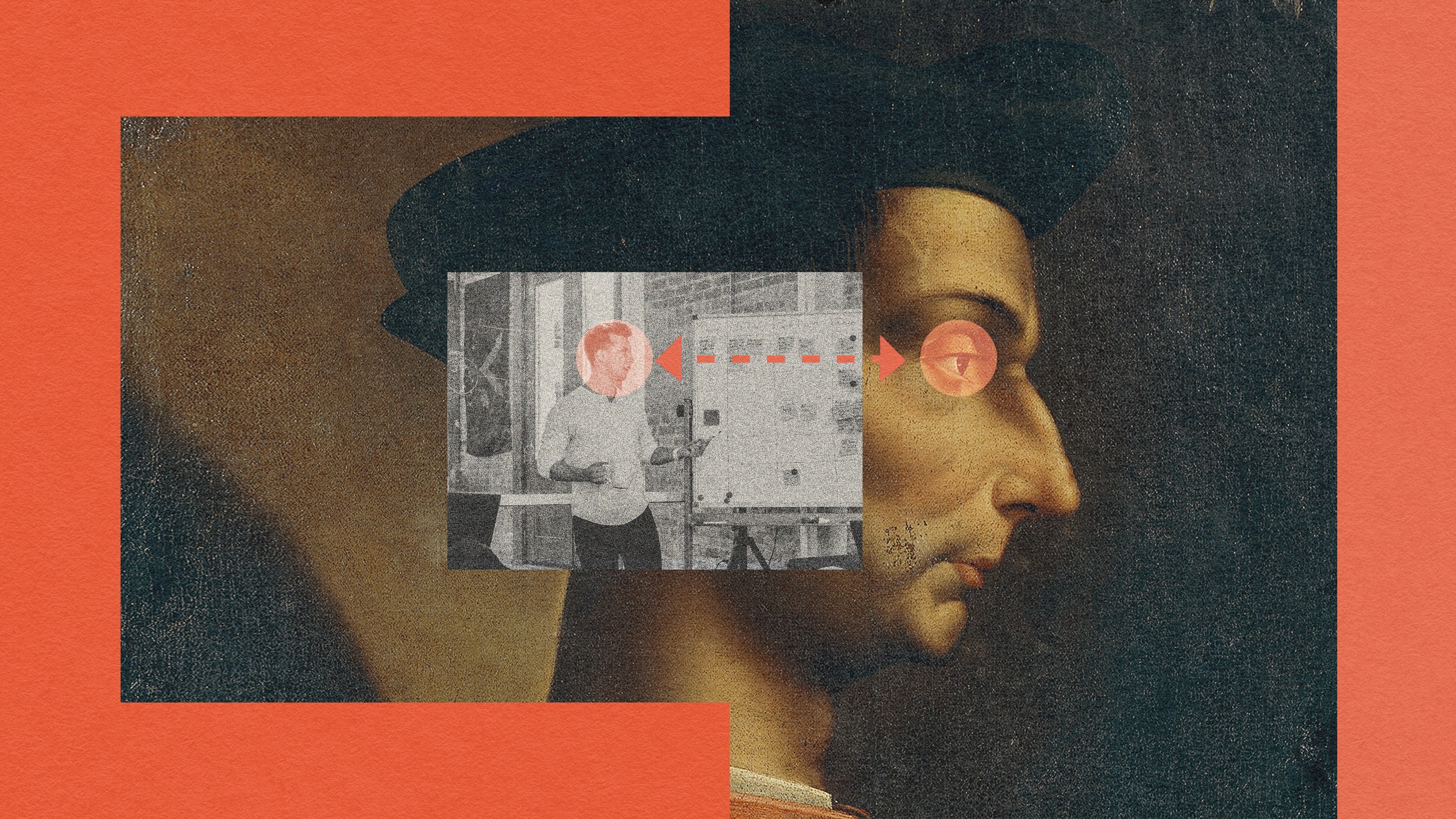What Was It Like When Galaxies Formed The Greatest Number Of Stars?
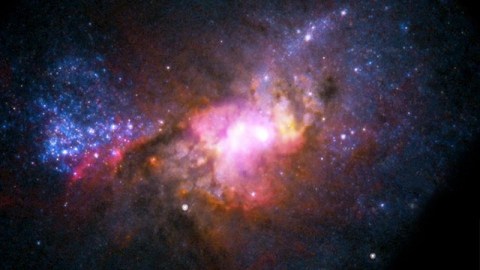
For more than 10 billion years, the star-formation rate across the Universe has been plummeting. Here’s the story.
Take a look at a wide variety of galaxies in the Universe, and you’ll find a vastly different set of stories. The largest ones are giant ellipticals, many of which haven’t formed any new stars over the latter half of our entire cosmic history. Many spiral galaxies are like our own Milky Way, with a small number of regions forming new stars, but where the overall galaxy is largely quiet. And a few galaxies are undergoing rapid, intense periods of star-formation, from interacting spirals that are littered with millions of new stars to irregular starburst galaxies, where the entire galaxy transforms into a star-forming region.
But on average, the rates of new star formation today are the lowest they’ve been since the extreme early stages of the Universe. The majority of stars in the Universe formed only in the first 1-to-3 billion years, and the star-formation rate has plummeted ever since. Here’s the cosmic story behind it.

In the early days of the Universe, matter is far denser than it is today. There’s a very simple reason for this: there’s a fixed amount of material in the observable Universe, but the fabric of space itself is expanding. So you’d expect, when the Universe was younger, that there’d be more star formation, since more matter would be closer together to clump and form stars.
But also in the early days, the Universe was more uniform. At the moment of the hot Big Bang, the densest regions of all were only about 0.01% denser than a typical, average region, and so it takes a long time for those overdense regions to grow and collect enough matter to form stars, galaxies, and even larger structures. Early on, you have factors working both for you and against you.

The way you form stars is pretty straightforward: get a large amount of mass together in the same spot, let it cool and collapse, and you get a new star-forming region. Often, a large, external trigger, like tidal forces from a large, nearby mass or rapidly-ejected material from a supernova or gamma-ray burst, can cause this type of collapse and new star-formation as well.
We see this in the nearby Universe, both in regions within a galaxy, like the Tarantula Nebula in the Large Magellanic Cloud, as well as on the scales of entire galaxies themselves, like in Messier 82 (the Cigar galaxy), which is being gravitationally influenced by its neighbor, Messier 81.
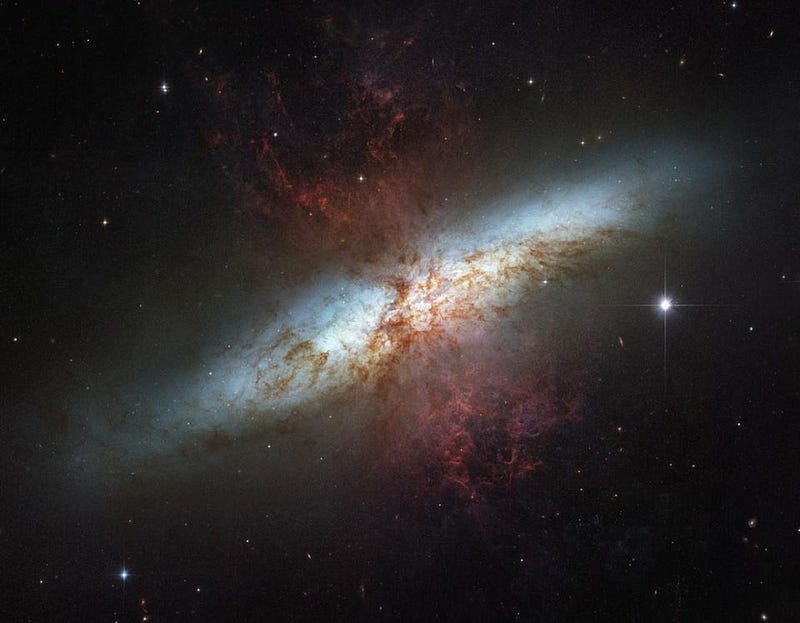
But the greatest trigger for star-formation of all is during what astronomers call a major merger. When two comparably galaxies collide and merge together, a huge wave of star-formation can envelop the entire galaxy, causing what we call a starburst. These are the largest instances of star-formation in the Universe, and some of them are occurring even today.
Does that mean that star-formation is continuing to occur at the same rates, or near them, as at its peak? Hardly. Most of these major merger are already far in the rear-view mirror of the Universe’s history. The expansion of the Universe is a relentless phenomenon, just like gravitation. The problem is that there’s a competition going on, and gravitation lost a long time ago.
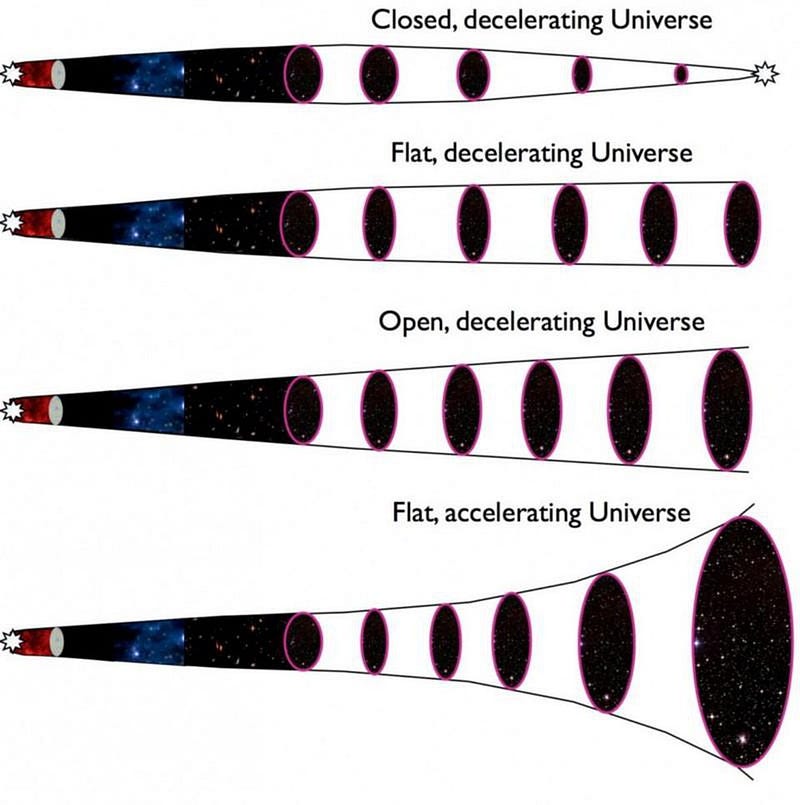
If the Universe were made 100% of matter, and the initial expansion rate and the matter density balanced one another perfectly, we’d live in a Universe that would always have major mergers in its future. There would be no limit to the size of the large-scale structure that formed:
- star clusters would merge into proto-galaxies,
- proto-galaxies would merge into young, small galaxies,
- those galaxies would merge into the large spirals we have today,
- spirals would merge together to form giant ellipticals,
- spirals and ellipticals would fall into clusters,
- clusters would collide and form superclusters,
- and superclusters themselves would form together, leading to megaclusters,
and so on. As time continued to pass, there would be no limit to the scale at which the cosmic web grew and grew.
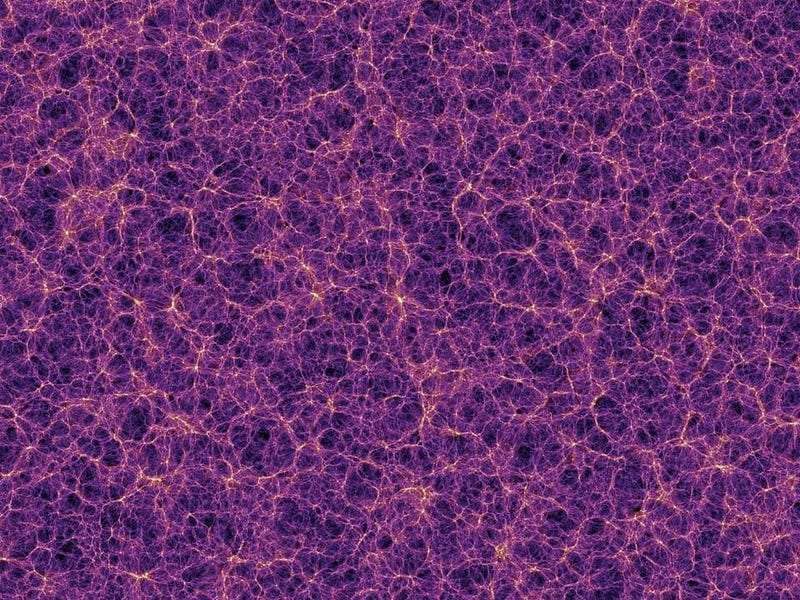
Unfortunately, for all you fans of new stars, that isn’t our Universe. Our Universe has far less matter than that, and most of the matter we do have isn’t star-forming material at all, but rather some form of dark matter. In addition, most of the Universe’s energy comes in the form of dark energy, which only serves to drive the unbound structures apart.
As a result, we don’t get any large-scale structures that are bound beyond the sizes of galaxy clusters. Sure, some galaxy clusters will merge together, but there’s no such thing as a supercluster; those apparent structures are mere phantasms, to be destroyed as the Universe continues to expand.
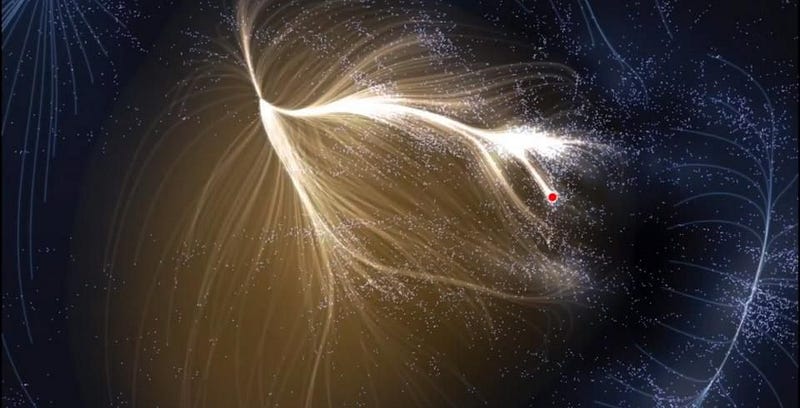
Given the Universe we have, then, what does our star-formation history look like? The first stars form after perhaps 50–100 million years, when the small-scale molecular clouds can accrue enough matter to collapse. By time the Universe is around 200–250 million years old, the first star clusters have merged together, triggering a new wave of star-formation and forming the earliest galaxies. By time the Universe is 400–500 million years old, the largest galaxies have already grown to a few billion solar masses: around 1% the mass of the Milky Way.
A little bit later than this, the first galaxy clusters start to form, major mergers become common, and the cosmic web starts to get more and more dense. For the first 2-to-3 billion years of the Universe, the star formation rate only continues to rise.
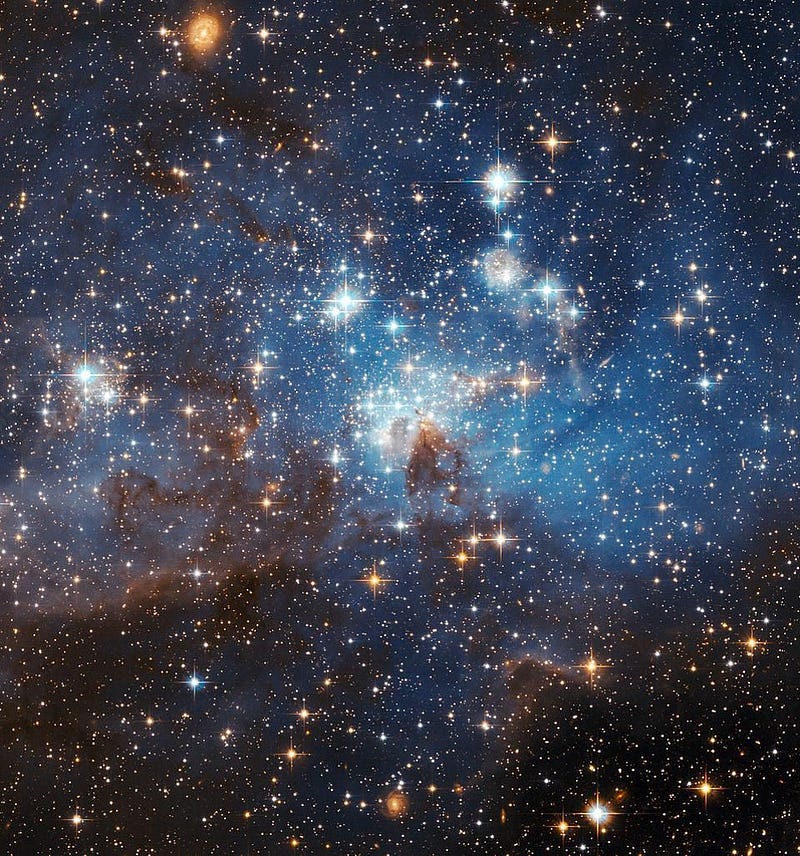
This rise, however, doesn’t continue beyond this point. After about 3 billion years of age, the star-formation rate begins to drop, and drops precipitously and continuously thereafter.
What’s going on to cause that?
A number of factors, all working in tandem. Stars form out of (mostly) hydrogen and helium gas, which collapse and ignite nuclear fusion. This fusion increases the internal pressure, working to expel much of the potentially star-forming material. As galaxies clump together to form groups and clusters, the gravitational potential gets greater, but the intergalactic medium also gets more material inside it. This means, as galaxies speed through denser regions of space, much of this potentially star-forming material gets stripped away.
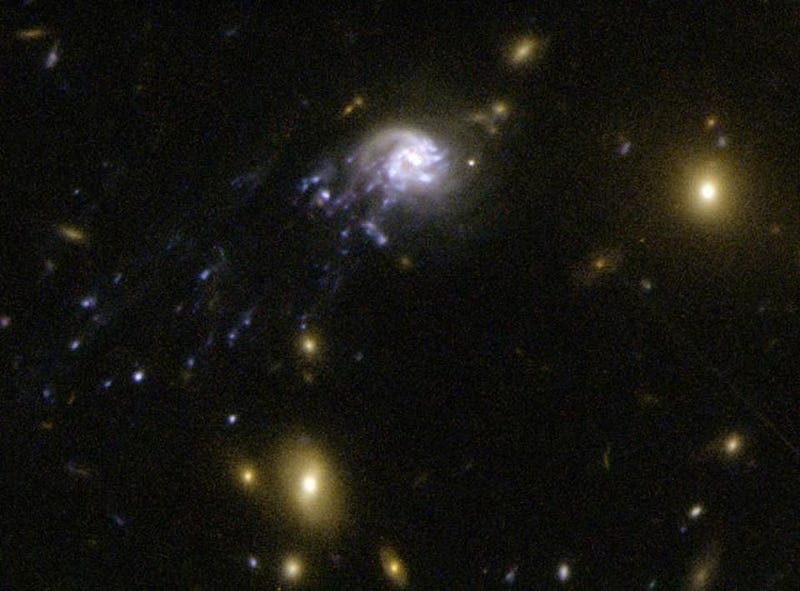
Additionally, more and more of the material found in these galaxies is processed as time goes on: filled with heavier and heavier elements. In a new study by UC Riverside scientists, they found that the older a star-forming galaxy is, the slower it forms stars.
Using some of their own newly discovered SpARCS clusters, the new UCR-led study discovered that it takes a galaxy longer to stop forming stars as the universe gets older: only 1.1 billion years when the universe was young (4 billion years old), 1.3 billion years when the universe is middle-aged (6 billion years old), and 5 billion years in the present-day universe.
In other words, new stars form at a faster rate early on, and at a slower rate today. Add in dark energy, which restricts additional structure from forming, and you’ve got a recipe for a very quiet Universe.
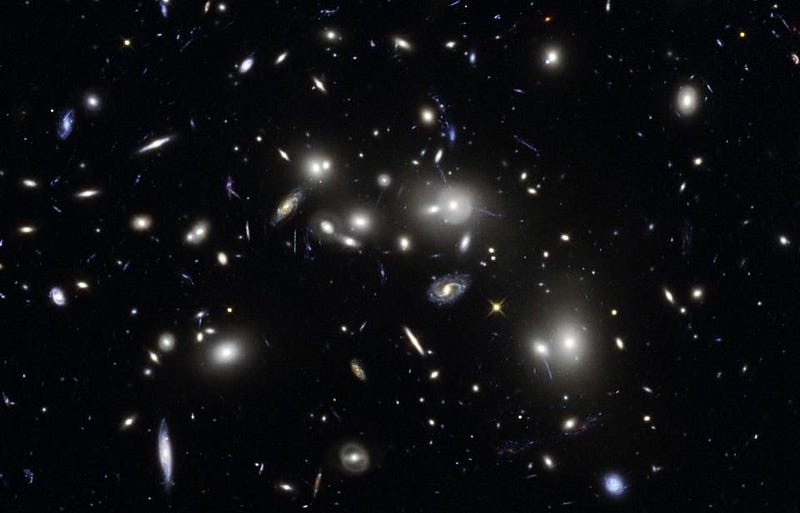
Let’s put it all together, now. Early on, there was plenty of pristine (or more pristine) material, and many more mergers of comparably-sized galaxies occurring. When large galaxies merged in clusters, they were first forming clusters back then, meaning there was less mass-stripping and more starbursting when galaxies interacted. And even though galaxies are larger today than they were back then, they were still substantial after a few billion years, and mergers were far more common.
All told, according to the most comprehensive studies ever undertaken, the star-formation rate has declined by a whopping 97% since its maximum, 11 billion years ago.
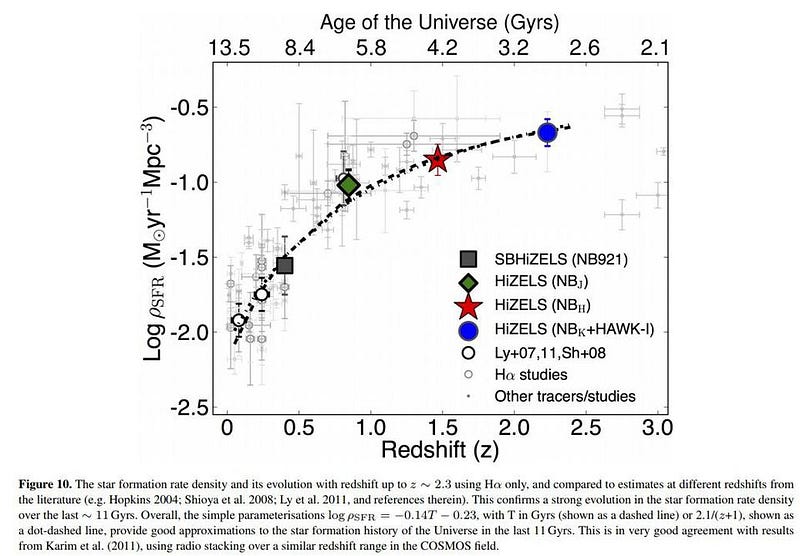
The star-formation rate declined slowly and steadily for a few billion years, corresponding to an epoch where the Universe was still matter-dominated, just consisting of more processed and aged material. There were fewer mergers by number, but this was partially compensated for by the fact that larger structures were merging, leading to larger regions where stars formed.
But right around 6-to-8 billion years of age, the effects of dark energy began to make their presence known on the star formation rate, causing it to plummet precipitously. If we want to see the largest bursts of star formation, we have no choice but to look far away. The ultra-distant Universe is where star formation was at its maximum, not locally.
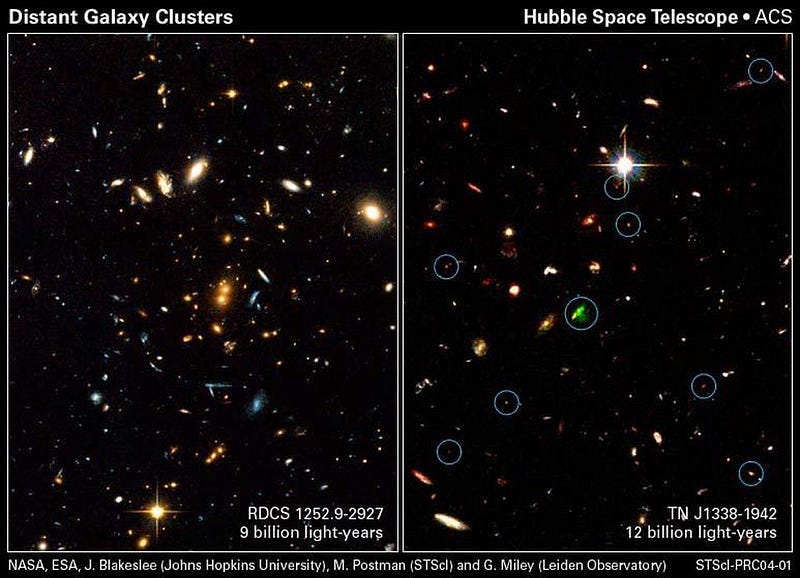
As long as there is gas remaining in the Universe and gravitation is still a thing, there will be opportunities to form new stars. When you take a cloud of gas and allow it to collapse, only about 10% of that material winds up in stars; the remainder goes back into the interstellar medium where it will get another chance in the distant future. Although the star-formation rate has plummeted since the Universe’s early days, it’s not expected to drop off to zero until the Universe is many thousands of time its present age. We will continue to form new stars for trillions upon trillions of years.
But even with all that said, new stars are much more of a rarity now than they have been at any point in our past since the Universe was in its infancy. We should be able to find out how star formation rose to its peak, and what the factors were that shaped the star-formation rate in the early days, with the advent of the James Webb Space Telescope. We already know what the Universe looks like, and how it’s declining today. The next great step, that’s almost upon us, is to learn just how it grew up to be the way it was at every step in our past.
Further reading on what the Universe was like when:
- What was it like when the Universe was inflating?
- What was it like when the Big Bang first began?
- What was it like when the Universe was at its hottest?
- What was it like when the Universe first created more matter than antimatter?
- What was it like when the Higgs gave mass to the Universe?
- What was it like when we first made protons and neutrons?
- What was it like when we lost the last of our antimatter?
- What was it like when the Universe made its first elements?
- What was it like when the Universe first made atoms?
- What was it like when there were no stars in the Universe?
- What was it like when the first stars began illuminating the Universe?
- What was it like when the first stars died?
- What was it like when the Universe made its second generation of stars?
- What was it like when the Universe made the very first galaxies?
- What was it like when starlight first broke through the Universe’s neutral atoms?
- What was it like when the first supermassive black holes formed?
- What was it like when life in the Universe first became possible?
